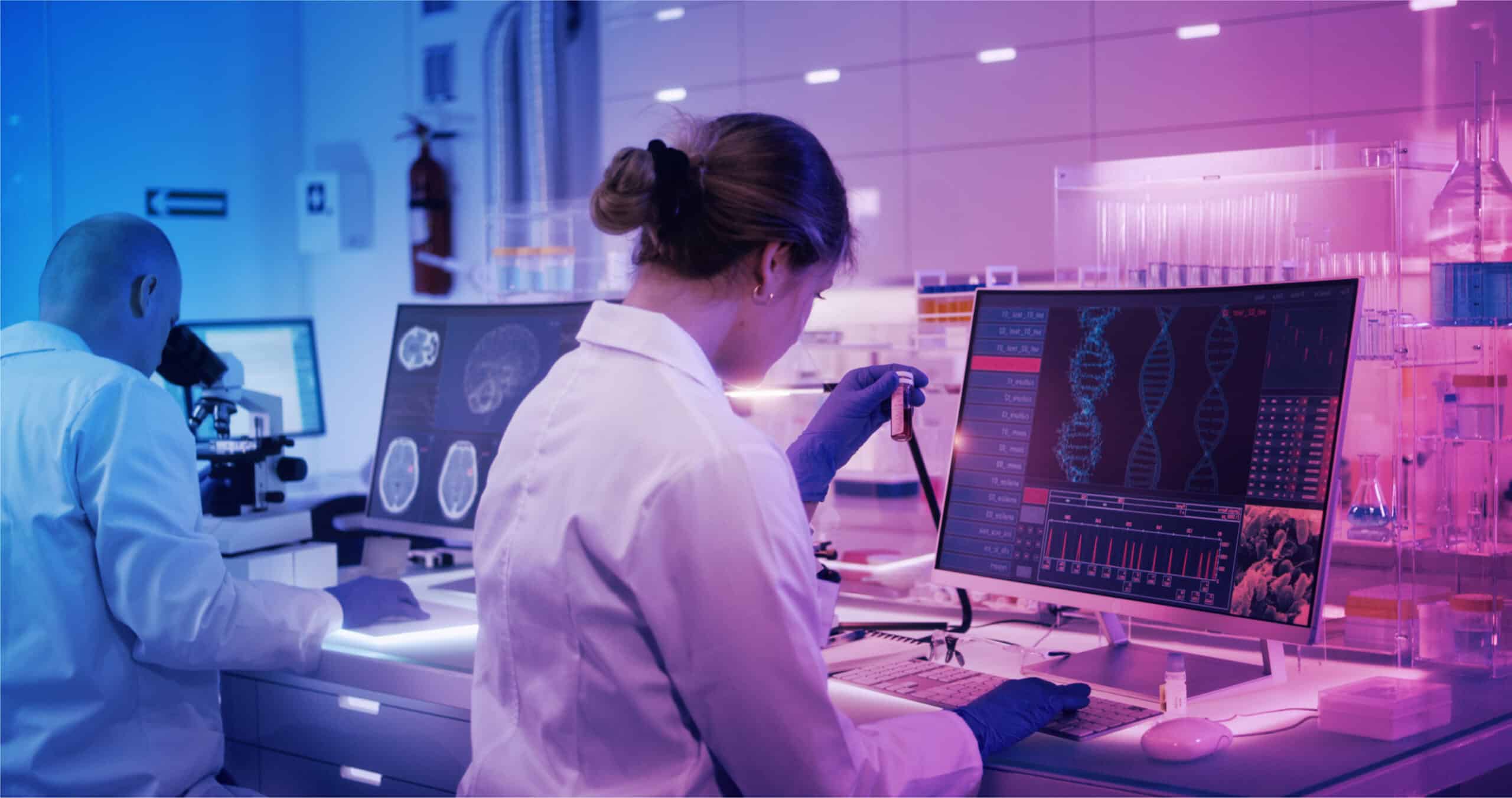
Research PRojects
MSD Biomarker Identification
Show Details
Using specimens retrieved through UMSDF’s Biobank the researchers at the Children’s Hospital of Philadelphia and University of Washington worked together to evaluate residual sulfatase enzyme activity and accumulating GAG patterns. They worked to distinguish cases from controls and to stratify MSD clinical severity groups.
UMSDF Biobank
Show Details
In conjunction with Genetic Alliance, the United MSD Foundation houses biological specimens (blood and urine) in Fredrick, Maryland, at the Precision for Medicine Biobank. UMSDF has collected and processed samples from around the world and provided them to researchers interested in identifying crucial biomarkers.
UMSDF Patient Registry
Show Details
The United MSD Foundation Patient Registry captures longitudinal health information about patient and family experiences through online surveys that support critical MSD research. Using a secure platform, MyDataHelps, families affected by MSD can create accounts, complete surveys, connect electronic health records, and track personal health information over time. The registry is open to parents of individuals with a confirmed MSD diagnosis and carriers of the MSD gene.
Prospective Natural History Study
Show Details
The Children’s Hospital of Philadelphia and the University of Göttingen are working together to address gaps identified in the meta-analysis and retrospective natural history study. In total at least 10 patients will be seen two times in either the U.S. or Germany. The two visits, 12 months apart, will allow the researchers to monitor how the disease progresses.
Retrospective Natural History Study
Show Details
The team reported on 35 different cases of Multiple Sulfatase Deficiency. They were able to assess neurologic function, complete biochemical and computational modeling of novel variants, and classify genotypes. This information allowed them to refine disease progression information and identify areas where further data is needed.
Multiple Sulfatase Deficiency Meta-Analysis
Show Details
The research team completed a systematic literature review and meta-analysis on data from all published MSD cases. They were able to extract biochemical, genetic, clinical, and brain imaging information. This allows for new insights into disease progression and effects.\
Drug Repurposing Clinical Trial
Show Details
Dr. Schlotawa’s Tazarotene repurposing study has been selected by the Remedi4All consortium to move forward to clinical trials. The team is currently in the middle of determining the protocol and timeline.
Retinoic Acid Derivative Efficiency Study in Mice
Show Details
In collaboration with Jackson Laboratory, MSD mice were treated with a retinoic acid derivative. Various dosages, administration methods, and combinations were tested to identify the most promising protocol. Sulfatase levels were measured in various tissues to quantify impact.
Drug Screen for Repurposing
Show Details
Using fibroblast cells (skill cells), from MSD patients, Dr. Schlotawa’s team screened all FDA-approved drugs. They looked at the effect of each drug on 6 different sulfatase enzymes. During the screening process they identified a promising target which they then progressed to testing in a mouse model.
AAV9 SUMF1 Gene Therapy Manufacturing and Clinical Trial
Show Details
Prior to moving onto clinical trials, the gene therapy vector will be produced in mass amounts. This will allow for researchers and physicians to have enough therapy on hand to treat patients in the clinical trial.
As part of the BeSpoke grant, funding as been provided for a phase I/II clinical trial for the AAV9 SUMF1 gene therapy. The trial will be held at the Children’s Hospital of Philadelphia. Additional details are still being determined such as inclusion criteria.
AAV9 SUMF1 Gene Therapy Toxicology Study
Show Details
In order to show safety of the AAV9 gene therapy prior to clinical trials, a toxicology study is required to test the safety of the therapy at various doses. The work completed on the AAV9 SUMF1 gene therapy in rats showed no adverse effects at the therapeutic dosages.
AAV9 SUMF1 Gene Therapy in KO Mouse Model
Show Details
The team compared the efficiency of injecting the AAV9 SUMF1 gene therapy into the cerebral ventricles and systemic administration in neonatal knock-out mice and systemic administration alone. They found that combining delivery methods lead to global activation of sulfatases, and almost near-complete clearance of GAGs. Additionally, they saw improved behavior in the mice treated with the combined approach.
AAV9 SUMF1 Gene Therapy Development
Show Details
The researchers developed a novel vector including the SUMF1 gene and inserted it intracerebroventricularly in neonatal knock-out mice. They noted that mice treated with the gene therapy had significantly improved survival and gross motor function. They also noticed no adverse effects in the treated mice.
Fruit Fly Model
Show Details
Building off the work of the Selleck Team, Dr. Perlstein created three additional fly models, two knock-in and one knock-out. He compared the fly models he created to wild type fruit flies but did not see any phenotypic difference.
Fruit Fly Model
Show Details
The research team created a drosophila (fruit fly) model of Multiple Sulfatase Deficiency by creating pathogenic variants in the fly’s SUMF1 gene. It was found that the MSD fruit flies had a reduced lifespan, an accumulation of both heparan and chondrotin sulfate, and heightened sensitivity to reactive oxygen species stress.
Knock-In Mouse Model
Show Details
Previous investigations of MSD were limited by the severe phenotype and short lifespan of the Knock-Out MSD mouse model. To overcome these limitations, a novel Knock-In model carrying a SUMF1 mutation, expected to result in a less severe phenotype, was developed.
Knock-Out Mouse Model Characterization
Show Details
The research team created mice models with completely absent SUMF1 activity (knock-out). As such, these mice have completely absent activity of all sulfatases. This leads to a severe and progressive phenotype, massive GAG accumulation, systemic inflammation, apoptosis, and neurodegeneration. This mouse model would go to be later used to test various treatment options.
Let’s Connect
Connect with MSD families and get valuable information from medical researchers and doctors.


